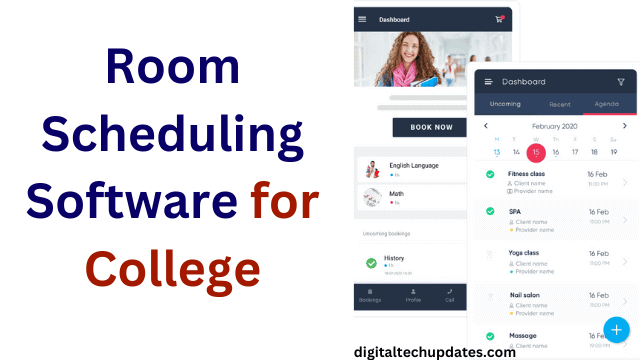College scheduling can be a headache for administrators, faculty, and students alike. With classes, meetings, events, and activities happening all over campus, it can be challenging to keep everything organized and ensure that the right rooms are available at the right times. Fortunately, there is a solution: room scheduling software.
What is Room Scheduling Software?
Room scheduling software is a tool that allows you to room scheduling softwareschedule and manage the use of rooms and other resources on your campus. With this software, you can create and manage reservations, view availability, and assign resources to specific events or activities. This software can be used by a variety of departments, including academic departments, student services, and facilities management.
Benefits of Room Scheduling Software
There are many benefits to using Room scheduling software for colleges on your college campus. Here are just a few:
Streamlined Scheduling: With room scheduling software, you can quickly and easily schedule rooms and other resources on your campus. This eliminates the need for paper-based schedules or complicated spreadsheets, making the process more efficient and accurate.
Increased Visibility: Room scheduling software provides visibility into room availability and usage. This can help you identify patterns and trends in room usage, allowing you to make informed decisions about how to allocate resources.
Improved Communication: Room scheduling software allows you to communicate scheduling information to faculty, staff, and students in real-time. This can help to reduce scheduling conflicts and ensure that everyone is on the same page.
Cost Savings: By optimizing room usage and reducing scheduling conflicts, room scheduling software can help to save your college money on unnecessary expenses such as overtime pay, last-minute room rentals, or unnecessary room maintenance.
Choosing the Right Room Scheduling Software
When it comes to choosing room scheduling software for your college, there are several factors to consider. Here are some things to keep in mind:
User-Friendliness: Look for room scheduling software that is easy to use and intuitive. The software should be able to handle a variety of scheduling scenarios, from simple one-time events to complex recurring schedules.
Customizability: The software should allow you to customize scheduling parameters to fit your college’s unique needs, including the ability to assign specific resources to events or activities.
Integration: Look for room scheduling software that can integrate with other software systems on your campus, such as your learning management system or student information system.
Scalability: Choose software that can scale with your college’s needs. If you anticipate growth or changes in the future, it’s important to choose a system that can accommodate those changes.
Implementing Room Scheduling Software
Once you’ve selected the right room scheduling software for your college, it’s time to implement it. Here are some tips to make the implementation process as smooth as possible:
- Define Your Needs: Before implementing room scheduling software, it’s important to define your college’s scheduling needs. This will help you choose the right software and configure it to meet your needs.
- Get Buy-In: Room scheduling software will affect many people on your campus, so it’s important to get buy-in from faculty, staff, and students. This can be done through training sessions or information sessions to demonstrate the benefits of the new system.
- Train Your Users: Make sure that all users are trained on the new room scheduling software. This will help to ensure that the system is used correctly and that everyone is on the same page.
- Monitor Usage: Once the system is up and running, monitor its usage and gather feedback from users. This will help you identify any issues or areas for improvement.



